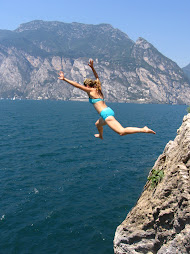 We´ve been in Johannesburg now for three days, and learned a bit about South Africa. We visited the Apartheid Museum (their motto is "where apartheid belongs") and headed out to Soweto. If you haven´t heard of Soweto, it is short for "south west township" and is where millions of black South Africans were forcibly moved to during apartheid. If they wanted to travel into Joburg (which most of them had to, for work) they had to carry an identity card and they had permission to travel only during certain hours and days. This was only one tiny piece of a larger picture of keeping different races seperate (apartheid literally means "apart-hood" in Afrikaans), providing many more privileges to white folks, and literally treating blacks as though they were not people. I know this type of history is not unique to South Africa but what shocks me is how recently this was happening - up until the early nineties, you may remember. I know that I had heard about apartheid then and watched "artists against apartheid" rock concerts and even boycotted my favourite soap brand because it supported apartheid according to a friend that was studying international relations, but it all seems so much more real being here and hard to understand what took the international community so long to get outraged.
We´ve been in Johannesburg now for three days, and learned a bit about South Africa. We visited the Apartheid Museum (their motto is "where apartheid belongs") and headed out to Soweto. If you haven´t heard of Soweto, it is short for "south west township" and is where millions of black South Africans were forcibly moved to during apartheid. If they wanted to travel into Joburg (which most of them had to, for work) they had to carry an identity card and they had permission to travel only during certain hours and days. This was only one tiny piece of a larger picture of keeping different races seperate (apartheid literally means "apart-hood" in Afrikaans), providing many more privileges to white folks, and literally treating blacks as though they were not people. I know this type of history is not unique to South Africa but what shocks me is how recently this was happening - up until the early nineties, you may remember. I know that I had heard about apartheid then and watched "artists against apartheid" rock concerts and even boycotted my favourite soap brand because it supported apartheid according to a friend that was studying international relations, but it all seems so much more real being here and hard to understand what took the international community so long to get outraged. This is a famous photo of a young schoolboy who was shot in the back by police (along with hundreds of others) during a protest by students in Soweto in 1976. We visited the scene of this incident, as well as one of the places that Nelson Mandela lived in the township. I have started reading his autobiography (thanks Rob and Amy!).
We don´t have any of our own pictures because we were warned not to take our camera with us, as it was likely to get stolen. We were also told by many people that Soweto was very dangerous, as was going downtown, especially in the shared taxis that the black people use, which we did and had a wonderful experience. We´ve decided that fear can be used to keep different groups of people apart as effectively as legislation and walls do and that is important to think about who the information is coming from. Fortunately, we have been staying with and befriended by some really amazing guys who were brave enough, as white people, to take the shared taxis and go to Soweto and knew that they were as safe as any other city. This one neighbourhood in Soweto, near the Regina Mundi churce, which served as a refuge for many activists, was the most peaceful and friendly place I´ve been to so far in South Africa.
Things have gotten a lot better in South Africa, but almost everyone I´ve met agrees that there is still a long way to go. I guess in the same way that the US electing a black president is a major step forward, but doesn´t mean that racism has suddenly vanished in north america. There are images of Barack Obama here alongside Nelson Mandela, Desmond Tutu, and other heroes of the people. Suddenly it doesn´t seem as bad to be mistaken for American - although I did still put Canadian flag handlebar tape on my bike!
We ride north tomorrow towards Botswana...

No comments:
Post a Comment